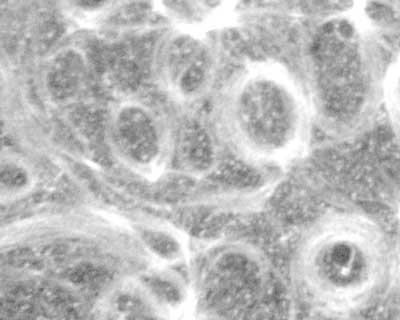| Oct 01, 2019 | |
Molecular memories are made of this(Nanowerk News) Devices such as hard drives, CDs, and DVDs provide storage for nearly all of the world’s information, but less is known about the storage potential of biological materials. |
|
| Researchers at the Yale Systems Biology Institute have found that it is possible to store information in the protein polymer network - or “actin cytoskeleton” - that forms the mechanical scaffolding within our cells, and which is responsible for maintaining and changing cell shape. | |
 |
|
| Seed like nucleators play a role in controlling the assembly of cell scaffolding. (Image: Yale University) | |
| Published in the journal Advanced Functional Materials ("Filament Nucleation Tunes Mechanical Memory in Active Polymer Networks"), the scholars describe the organizational role of a seed-like nucleator called ‘formin’ in controlling the rate of assembly of the polymer network. | |
| By tuning the density of the seeds and their rate of network assembly, the scientists were able to control the architecture and shape of the actin polymer network, effectively like encoding new biological memory. | |
| Advancing our understanding of polymer mechanics opens the way for biological principles to be used in future memory storage devices. | |
| The lead author of the article is Vikrant Yadav, a postdoctoral fellow in the lab of senior author Michael Murrell, assistant professor of biomedical engineering and physics. The work is a collaboration with scientists at University College London, the University of Chicago and Purdue University, and is funded by the Department of the Army and the Human Frontiers Science Program. |
| Source: By Jon Atherton, Yale University | |
|
Subscribe to a free copy of one of our daily Nanowerk Newsletter Email Digests with a compilation of all of the day's news. |
